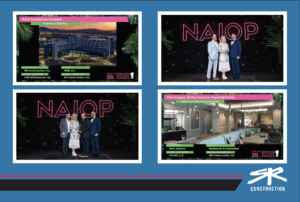
5 Why’s is a standard deep problem-solving tool used in LEAN construction and an integral part of the LEAN philosophy. When an issue first arises and the root cause is not identified, there is potential for that problem to arise again since only a symptom of the problem was identified and the root cause was not properly addressed. Addressing a problem more than once can become a waste of valuable resources, so by using this method, companies have the opportunity to avoid recurring mistakes, saving time and money.
This simple tool, which can help eliminate repeat problems, was developed by Mr. Sakichi Toyoda, the founder of Toyota Industries and one of the Industrial Revolution creators. This method obtained notoriety in the 1970s and is still used by many industries today.
This method merely asks the question “Why” until you identify the symptoms of a problem and get down to the source cause. 5 Why’s is most powerful when the discoveries come from people who have hands-on experience with the issues being discussed, by repeating the question “Why,” you can drill down to the root cause of the problem.
How it works
•The first step is to develop a precise problem statement, focusing on the process and not on the team members. When time is taken to determine the problem early on and clearly, it saves time and makes problem-solving easier.
•Next, the facilitator or team leader should ask “Why” the problem occurred. Facts must support the replies and should not be based on emotional answers. The feedback should focus on operational errors.
•The team leader then asks the team if the named causes were fixed and could the problem still occur. If yes, then move on to the second “Why” and then the third, fourth, fifth, and so on until the answer is no.
•It’s not always required to ask “Why” five times. The source cause could be identified during the third or fourth “Why.” By the 3rd, 4th, or 5th “Why,” a systemic or management practice may be revealed as the cause.
•After the team identifies the root cause, corrective action needs to be taken. Team members involved should then discuss amongst each other to find the proper solution to prevent the problem from repeating.
•The team would then set a date to meet again to check if their actions made a real impact. If it did not, then the entire process would need to start over again.
The entire process is documented and distributed throughout the company. Distributing this knowledge as a “lessons learned” will provide insight that can be useful to the team if a similar issue was to arise; the team would then know how to address the issue and successfully mitigate the problem.
This method is practiced at SR Construction as a problem-solving exercise, to encourage each team member to take responsibility and share ideas as we all move together towards constant improvement.


